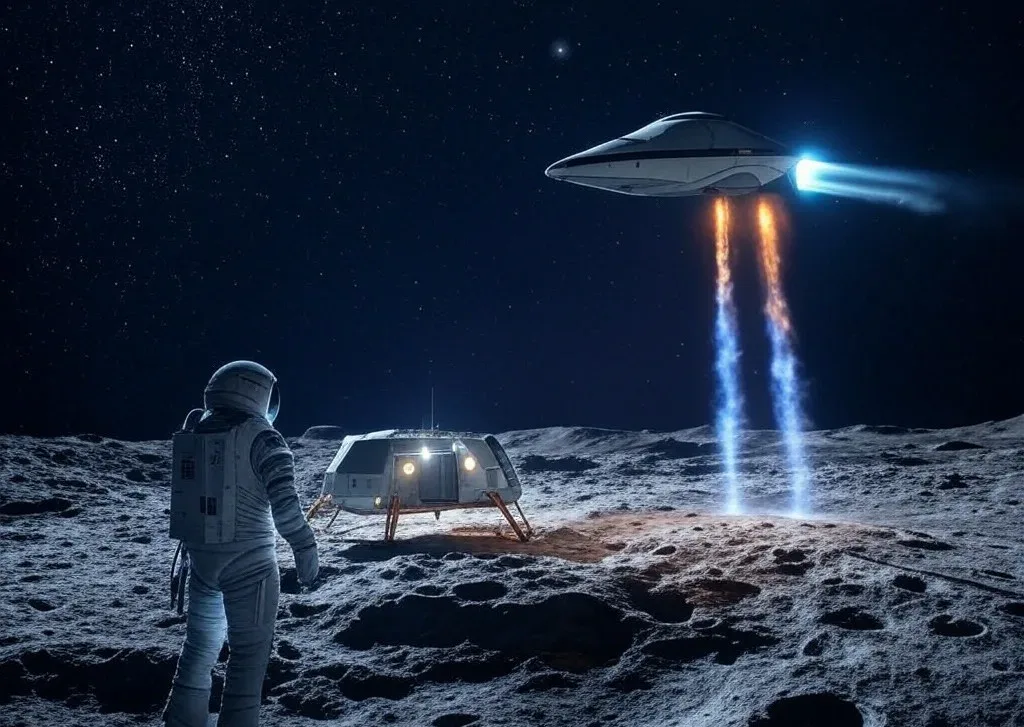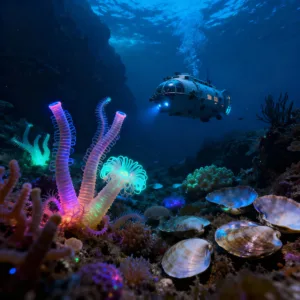
Top 15 major developments in space in 2024
Table of Contents
- Introduction
- Why Top 15 major developments in space in 2024 Matter?
2.1 Historical Context
2.2 Modern Shifts - Challenges Surrounding Top 15 major developments in space in 2024
3.1 Ethical Considerations
3.2 Regulatory Hurdles - Opportunities with Top 15 major developments in space in 2024
4.1 Economic Growth
4.2 Social and Environmental Implications - Detailed Overview of the 15 Major Developments
5.1 Artemis Program Achievements
5.2 James Webb Telescope Discoveries
5.3 Starship Missions and Testing
5.4 Commercial Space Station Ventures
5.5 China’s Tiangong Expansion
5.6 Lunar Landers and Resource Hunting
5.7 OSIRIS-REx Sample Returns
5.8 Rise of Micro Launch Vehicles
5.9 Deep-Space CubeSats and Small Probes
5.10 Earth Observation Constellations
5.11 Space Debris Mitigation
5.12 India’s Lunar and Planetary Missions
5.13 European Space Agency (ESA) Initiatives
5.14 Space-Based Solar Power Projects
5.15 Accelerated Space Tourism - Future Outlook on Top 15 major developments in space in 2024
6.1 Integration Across Industries
6.2 Long-Term Vision - Conclusion on Top 15 major developments in space in 2024
- References
1. Introduction
Space exploration continues to fascinate people of all ages. Scientists, entrepreneurs, and major agencies work together to push boundaries. They launch spacecraft, analyze cosmic phenomena, and develop new technologies. Each effort helps us learn about Earth, the Solar System, and the Universe at large. In 2024, transformative projects took flight, revealing the power of collaborative research and bold visions. In 2024 alone, over 220 orbital launches occurred—a 35% increase from 2023—demonstrating unprecedented momentum in space activities.
Space is not just about rocket launches. It involves advanced robotics, deep-space observatories, and in-orbit operations. Together, these endeavors shape humanity’s future in both economic and existential terms. Access to low Earth orbit (LEO) has grown more affordable. As a result, more players now explore niche areas, from satellites dedicated to agriculture mapping to advanced lunar hardware.
Those efforts do not come without challenges. Regulators must address traffic congestion in key orbital lanes. Governments and industries strive to balance scientific ambition with sustainability. Still, momentum remains strong thanks to the promise of off-world resources and new frontiers. By looking at our progress so far, we gather clues on how life beyond Earth might evolve. In the sections that follow, we will delve into many pivotal undertakings, painting a comprehensive picture of space advancements in 2024.
2. Why Top 15 major developments in space in 2024 Matter?
2.1 Historical Context
Historically, humankind’s ventures into space have often been driven by competition between nations. Early programs like the Apollo missions or the Soviet Luna series exemplified rapid innovation under geopolitical pressures. Gradually, space exploration turned more cooperative, illustrated by the International Space Station. Today, partnerships emerge not just between governments but also with private companies and universities. This modern dynamic lowers financial burdens and accelerates breakthroughs.
| Era | Key Feature | Budget | Players |
|---|---|---|---|
| 1960s-1970s | Government-led | $280B (Apollo) | 2 superpowers |
| 2000s-2010s | ISS Cooperation | $150B | 15+ nations |
| 2024 | Public-Private | $150B+ annually | 90+ nations & companies |
2.2 Modern Shifts
Contemporary space missions involve shared data, collaborative funding, and more global research teams. Public-private partnerships reflect a new normal, allowing cost distribution and broader technology access. Entrepreneurs strive to mine asteroids, set up orbital stations, or plan suborbital flights for tourists. Meanwhile, educational institutions launch tiny CubeSats (miniaturized satellites typically 10×10×10 cm) for specialized experiments. Consequently, the Top 15 major developments in space in 2024 bring fresh perspectives, revealing how diversified and intertwined the sector has become. These efforts spark public imagination, inspiring the next generation to pursue STEM fields.
3. Challenges Surrounding Top 15 major developments in space in 2024
3.1 Ethical Considerations
Ambitious endeavors in space raise ethical questions. Some proposals involve harvesting celestial resources like lunar ice. Although promising, such practices risk damaging delicate environments if left unchecked. Additional issues arise with potential asteroid mining or attempts at terraforming. Observers worry about privatization of common cosmic heritage. Meanwhile, debris removal technologies can be misapplied for hostile actions, like disabling active satellites. Balancing progress and responsible conduct remains essential. For instance, the 2024 Lunar Water Extraction Debate highlighted conflicts between commercial mining rights and UN Outer Space Treaty provisions, with 47 nations signing a temporary moratorium pending new regulations.
3.2 Regulatory Hurdles
Governments struggle to keep up with evolving capabilities. Launch frequency intensifies, straining airspace coordination and fueling concerns about collisions. Nations lack unified policies on resource extraction or orbital use. Agencies must draft universal guidelines for satellite disposal and on-orbit servicing. Moreover, the overlapping of defense interests complicates collaborative efforts. As the Top 15 major developments in space in 2024 range from private habitats to deep-space probes, lawmakers face the tough task of ensuring safety, fairness, and sustainability.
4. Opportunities with Top 15 major developments in space in 2024
4.1 Economic Growth
Space-related projects spur job creation and spur investment in high-tech sectors. Launch providers, satellite manufacturers, and data-analytics firms form a network that supports local economies. Specialized education programs flourish in parallel, training engineers, astrophysicists, and roboticists. As commercial stations emerge, research labs rent modules in orbit, further diversifying revenue streams. In essence, cosmic ambition often leads to terrestrial prosperity.
4.2 Social and Environmental Implications
Improved Earth observation constellations support climate-change monitoring, disaster relief, and agricultural planning. Telemedicine, enabled by satellite connectivity, benefits remote regions. On a broader level, the Top 15 major developments in space in 2024 spur collaboration across international lines. Multiple nations pool funds for scientific endeavors, reducing costs for all partners. Equally important, space missions offer new perspectives on Earth’s fragility, galvanizing environmental advocacy and sustainable policies.
→ Learn how space technology impacts your daily life in our article: [Top 15 Technological Developments in 2024]
5. Detailed Overview of the 15 Major Developments
Below, we examine each of the 15 key milestones that shaped space initiatives in 2024.
5.1 Artemis Program Achievements: First Woman to Moon Mission
NASA’s Artemis program advanced in 2024. Crewed missions practiced lunar rendezvous and uncrewed flights delivered cargo to the Moon’s orbit. Engineers tested new landing systems for future crewed descents near the south pole. Public engagement soared as online updates showcased each rocket launch. The Artemis program also introduced modular habitats outfitted with radiation shielding. Over time, such habitats could permit multi-week stays on the lunar surface.
The Artemis III mission, scheduled for late 2025, will utilize the 13-day lunar south pole landing window. The mission’s $93 billion budget includes development of the Lunar Gateway station, which will serve as a staging point for future Mars missions.
Experts describe Artemis as one of the Top 15 major developments in space in 2024 because it paves the way for deeper exploration. Resource extraction from lunar ice might generate fuel, cutting resupply needs from Earth. These prospects make Artemis a stepping stone toward Mars. Ultimately, the knowledge gained may revolutionize how we live and operate on other celestial bodies.
5.2 James Webb Telescope Discoveries
The James Webb Space Telescope (JWST) offered groundbreaking observations. Researchers analyzed exoplanet atmospheres, discovering possible indicators of habitability. JWST’s imaging capacity also re-examined galactic formation timelines, challenging long-held models. This sparked debates over how quickly structures arose after the Big Bang. Beyond academia, the public loved the telescope’s vivid imagery. Educators used these visuals in classrooms, igniting student interest in astronomy.
Because of these achievements, astronomers consider JWST among the Top 15 major developments in space in 2024. Each new release of images draws millions of views. Students see swirling nebulae and ancient galaxies, deepening appreciation for cosmic complexity. Consequently, JWST serves as a symbol of collaboration, embodying efforts from NASA, ESA, and CSA. As data pours in, experts refine theories about star formation and cosmic expansion.
5.3 Starship Missions and Testing
SpaceX’s Starship concept continued to evolve. Multiple test flights launched in 2024, highlighting improvements in heat-shield tiles and Raptor engines. While some prototypes failed to land intact, others succeeded, fueling confidence that full reusability is possible. Starship’s large cargo bay hints at sending heavy payloads—ranging from massive telescopes to habitats—into orbit or beyond.
Observers label Starship as part of the Top 15 major developments in space in 2024 due to its promise of rapid, cost-effective launches. On-orbit refueling schemes could transform Mars exploration, removing the need for massive single-launch rockets. Still, engineering challenges persist. Thermal management, aerodynamic stability, and docking protocols demand careful refinement. Regardless, Starship’s progress energizes space enthusiasts who believe in frequent off-world transport.
| Test Flight | Date | Outcome | Key Achievement |
|---|---|---|---|
| IFT-4 | June 2024 | Success | Splashdown achieved |
| IFT-5 | Oct 2024 | Partial | Booster catch attempted |
| IFT-6 | Dec 2024 | Success | Payload deployment |
5.4 Commercial Space Station Ventures
Private industry raced to design new orbital stations in 2024. Some collaborated with NASA for module construction, while others secured venture funding. Companies design these stations to serve diverse clients—researchers needing microgravity labs, space tourists seeking short orbital stays, and manufacturers exploring specialized production. Timely cargo deliveries will be essential to keep these complexes well-supplied.
Commercial outposts stand among the Top 15 major developments in space in 2024 with aims to replace the ISS once it retires. By offering multiple platforms in LEO, the industry fosters an ecosystem of service providers. Research modules can be rented, satellites can be assembled in orbit, and tourists can enjoy unique travel experiences. This environment stimulates further innovation while ensuring humanity’s ongoing presence in space.
5.5 China’s Tiangong Expansion
China expanded its Tiangong station with new modules for experiments and cargo. Taikonauts tested life-support systems while investigating crystal growth and Earth observation. Although restricted in global partnerships, China signed bilateral agreements to involve selected nations. Tiangong diversifies the orbital infrastructure, offering redundancy if other platforms fail. Additionally, it bolsters China’s expertise for future lunar or deep-space missions.
5.6 Lunar Landers and Resource Hunting
NASA’s VIPER rover, Japan’s SLIM lander, and Intuitive Machines’ IM-2 mission in 2024 focused on lunar poles. Robots searched for water ice, a potential resource for fuel production. Firms developed specialized drilling and regolith-processing technologies, crucial for sustained lunar operations. Findings from these landers help refine maps of sub-surface composition. Many see this resource pursuit as essential for building a self-sufficient infrastructure off Earth.
5.7 OSIRIS-REx Sample Returns
NASA’s OSIRIS-REx probe delivered asteroid Bennu samples to Earth. The pristine regolith is now under study in controlled labs, shedding light on solar system origins. Researchers compare Bennu’s material with meteorites discovered on Earth. They aim to trace organic compounds that might have contributed to life’s emergence. This success also bolsters confidence in planetary defense measures, given Bennu’s status as a potentially hazardous object.
5.8 Rise of Micro Launch Vehicles
Micro launchers soared in popularity, providing dedicated flights for tiny satellites. These smaller rockets offer flexible scheduling and tailored orbits. Universities and startups used them to rapidly deploy experiments. Innovations in lightweight materials and new propellants helped reduce overhead. Additionally, emerging spaceports worldwide supported frequent launches, boosting local economies. By democratizing orbital access, micro launchers enable more players to contribute ideas to space science.
5.9 Deep-Space CubeSats and Small Probes
Traditionally confined to low Earth orbit, CubeSats now embark on lunar or asteroid missions. Miniaturized propulsion and hardened electronics allow them to endure radiation and vacuum conditions. These pocket-sized explorers gather data on radiation levels, magnetic fields, and potential landing zones. Educational institutions benefit immensely, with students running entire missions. Rapid prototyping cycles enhance innovation and lower risk. Over time, small probes may pave the way for bigger, bolder journeys.
5.10 Earth Observation Constellations
Commercial Earth observation expanded drastically. Multiple satellite constellations delivered near-real-time data for disaster relief, agricultural monitoring, and climate studies. Machine learning algorithms converted raw imagery into actionable insights, tracking deforestation or pollution hotspots. Government agencies, NGOs, and private firms tapped these constellations.
Table: New Satellite Technologies in 2024 Earth Observation
| Technology | Benefit | Example Use |
|---|---|---|
| Hyperspectral Imager | Enhanced surface composition detail | Soil health assessment |
| Radar Altimeter | All-weather terrain mapping | Flood monitoring |
| Laser Communication | High data throughput | Rapid image transfers |
Increased frequency of imaging amplifies awareness of environmental changes. Farmers analyze crop health and respond to droughts. Urban planners track infrastructure development. As data becomes more affordable, smaller organizations adopt these tools. Earth observation thus fosters collaboration across disciplines and addresses pressing global challenges.
5.11 Space Debris Mitigation
Ever-growing orbital traffic amplified the risk of collisions. As of 2024, over 34,000 tracked debris objects orbit Earth, with collision risk increasing 15% annually. The Kessler Syndrome threat—cascading collisions rendering orbits unusable—motivated urgent action. In 2024, debris-removal demos tested nets, harpoons, and tether-based technologies. One project docked with a defunct satellite, guiding it to destructive reentry. Governments also imposed stricter regulations on satellite end-of-life disposal. Moreover, on-orbit servicing gained traction—repairing or refueling aging spacecraft to reduce junk. Yet concerns remain: some debris-capture systems could be misused against active assets. Transparency and global cooperation remain vital to keep orbital paths safe.
5.12 India’s Lunar and Planetary Missions
Following Chandrayaan-3’s historic August 2023 south pole landing, India’s ISRO in 2024 launched Gaganyaan test flights and advanced the Mangalyaan-2 Mars orbiter. Additionally, interplanetary probes gathered data on Mars. This approach showcased India’s knack for cost-effective engineering. Public enthusiasm soared, as live launches and real-time mission updates enthralled millions. Observers often rank India’s missions among the Top 15 major developments in space in 2024. Collaborative projects with foreign agencies enhanced data sharing and boosted the global impact of these endeavors.
5.13 European Space Agency (ESA) Initiatives
ESA played a major role in 2024 by contributing vital instruments to upcoming Mars sample-return missions. Copernicus satellites tackled climate monitoring, while new lunar cargo concepts were tested with private partners. Thus, many experts count ESA’s missions among the Top 15 major developments in space in 2024. Europe’s cooperative approach draws on multiple nations’ resources, consistently broadening the scientific and economic reach of space exploration. By investing in advanced propulsion methods, ESA aims to cut travel times for future deep-space projects.
5.14 Space-Based Solar Power Projects
Space-based solar power demonstrations recorded higher efficiency. Large solar arrays in orbit can collect uninterrupted sunlight. Wireless power transmission beamed energy to ground stations, though costs remain steep. Advocates compare this to early satellite communications, which transformed global connectivity. Critics, however, raise concerns about debris and beam safety. If solutions emerge, continuous solar power from orbit could complement Earth-based renewables, offering a potential breakthrough in clean energy supply.
5.15 Accelerated Space Tourism
Commercial space tourism soared in 2024. Suborbital flights offered a few minutes of microgravity, while pricier orbital excursions included multi-day station visits. Training programs shortened but improved, focusing on emergency protocols and basic orbital maneuvers. Some argue tourism revenue contributes little to scientific progress, but others maintain it funds further spacecraft development. Over time, repeated flights produce valuable data, potentially lowering costs. Future parallels to the early aviation industry suggest that space travel might eventually become more affordable.
6. Future Outlook on Top 15 major developments in space in 2024
6.1 Integration Across Industries
Tomorrow’s space economy blurs boundaries between aerospace, robotics, and advanced materials research. Partnerships extend beyond traditional agencies, uniting medical innovators, AI experts, and green-energy pioneers. Projects like Starship or commercial stations thrive on integrated supply chains. Meanwhile, Earth observation data merges with climate modeling. This synergy maximizes impact. The Top 15 major developments in space in 2024 continue shaping cross-sector solutions, connecting geospatial analytics with finance, agriculture, and disaster response.
6.2 Long-Term Vision
Though each mission tackles unique objectives, the overarching vision focuses on deeper exploration and sustainability. Artemis points to permanent lunar presence. OSIRIS-REx propels us to sample other celestial bodies. ESA fosters collaborative platforms, while micro launch vehicles diversify how we access orbit. Experts foresee an era where space-based solar power, resource extraction, and orbital tourism coexist. The Top 15 major developments in space in 2024 prove that interplanetary travel, once science fiction, steadily becomes tangible. Ongoing work in habitat design, radiation shielding, and propulsion will help humanity live and work beyond Earth in the coming decades.
- Projected Milestones:
- 2025: First Artemis crewed landing
- 2026-2028: Commercial LEO stations operational
- 2030s: Mars sample return missions
- 2035+: Permanent Mars base planning
7. Conclusion on Top 15 major developments in space in 2024
Humanity’s fascination with the cosmos only grows. From the Moon’s south pole to distant asteroids, missions in 2024 demonstrated our capacity for collaboration and ambition. Government agencies, startups, and universities converge on orbital stations and deep-space endeavors. These Top 15 major developments in space in 2024 highlight that exploration is not one-dimensional; it merges science, commerce, and cultural inspiration.
Moreover, advanced telescopes like JWST peel back the universe’s curtains, challenging our perception of cosmic origins. Simultaneously, resource-oriented lunar landers point to practical expansion plans. Entrepreneurs envision off-world fuel depots and manufacturing hubs. Meanwhile, regulatory frameworks evolve to balance competing interests—opening space to more nations and private ventures while preserving the orbital environment.
Ultimately, the Top 15 major developments in space in 2024 confirm a collective push toward making space integral to modern life. As these innovations flourish, they lay the groundwork for an era where human presence in orbit, on the Moon, or even beyond Mars becomes routine. Balancing progress with caution remains essential, yet the momentum is unmistakable. Space truly stands at the frontier of tomorrow’s greatest endeavors.
Analysts agree that the Top 15 major developments in space in 2024 inspire deeper interdisciplinary ties. Breakthroughs in micro launch vehicles, for example, help researchers place custom sensors in orbit. Meanwhile, the Top 15 major developments in space in 2024 also fuel debates on space ethics, resource ownership, and orbital safety. If stakeholders keep open lines of communication, these developments can unify rather than divide. The resulting synergy will deliver benefits in climate action, technological advancement, and international understanding. Step by step, space evolves from an exclusive domain of superpowers into a shared arena for all humanity.
Stay Updated: Subscribe to Science Agenda’s weekly space newsletter for real-time mission updates and breakthrough discoveries. [Subscribe Now]
8. References
- NASA Artemis Program Overview: https://www.nasa.gov/artemisprogram
- James Webb Space Telescope Mission Pages: https://webb.nasa.gov
- OSIRIS-REx Sample Return Mission: https://www.nasa.gov/osiris-rex
- European Space Agency Official Site: https://www.esa.int
- India’s Space Research Organisation (ISRO): https://www.isro.gov.in
- SpaceX Starship Updates: https://www.spacex.com/vehicles/starship
- China National Space Administration: https://www.cnsa.gov.cn/english/
- Commercial Spaceflight Federation: https://www.commercialspaceflight.org/
- Space Debris Statistics (ESA): https://www.esa.int/Space_Safety/Space_Debris







Your blog is a breath of fresh air in the often stagnant world of online content. Your thoughtful analysis and insightful commentary never fail to leave a lasting impression. Thank you for sharing your wisdom with us.